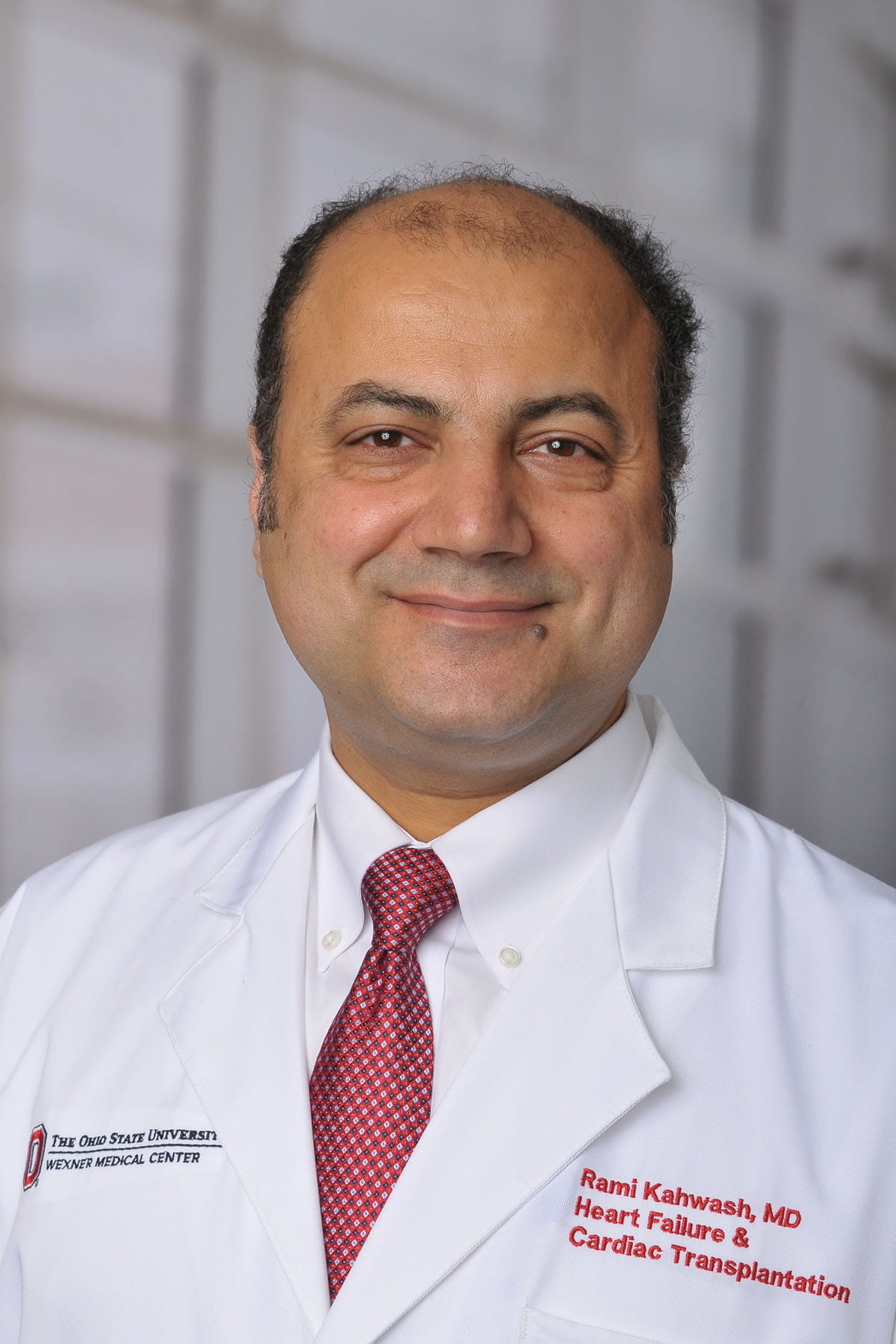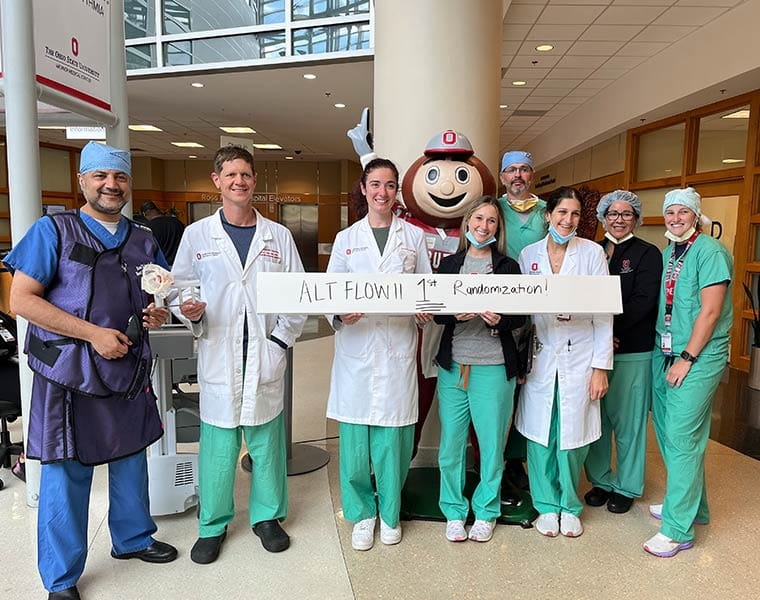 COLUMBUS, Ohio – The Ohio State University Wexner Medical Center on Wednesday randomized the first patient in the world in a clinical trial evaluating the effectiveness of a device designed to alleviate heart failure symptoms. The first patient is a 54-year-old man from Bellefontaine, Ohio whose heart failure had been causing severe shortness of breath.
COLUMBUS, Ohio – The Ohio State University Wexner Medical Center on Wednesday randomized the first patient in the world in a clinical trial evaluating the effectiveness of a device designed to alleviate heart failure symptoms. The first patient is a 54-year-old man from Bellefontaine, Ohio whose heart failure had been causing severe shortness of breath.
"We're excited to continue to be at the forefront of investigating new therapies to treat and better understand heart failure. In April 2022, we were the first in Ohio to implant this device in an early feasibility study and that patient is doing well. We are delighted to be the first in the world to investigate this device on a larger scale" said Rami Kahwash, MD, director of Ohio State's Heart and Vascular Research Organization and a professor of clinical medicine at the Ohio State College of Medicine. He and Scott Lilly, MD, an interventional cardiologist and the director of the structural heart disease program, are the principal investigators of the trial at Ohio State.
Heart failure is the world's leading cause of hospitalizations, affecting 6.2 million in the U.S. This chronic condition occurs when the heart muscle is not working efficiently. Heart failure with preserved ejection fraction (HFpEF), accounting for half of heart failure cases, occurs when the heart muscle becomes stiff and does not relax and fill properly. Over time this may result in symptoms such as shortness of breath, fatigue, swelling in the legs and ankles and difficulty exercising.


The novel investigational device is designed to relieve pressure in the left side of heart, resulting in a reduction of symptoms like shortness of breath. During the procedure, doctors insert a catheter into a vein in the groin, allowing access to the heart. "The tiny shunt device is implanted in the heart between the coronary sinus vein and the left atrium. The device placement in this location preserves the interatrial septum, which is the wall separating the right and left sides of the heart's upper chambers" said Lilly, who randomized the first patient.
Atrial fibrillation and leaky mitral valve are highly prevalent in patients with heart failure and when medications and lifestyle changes aren't working, it may be necessary to do corrective procedures that require the interatrial septum for the catheter's entry. "The placement of this device is a genius way to offload the left side of the heart while preserving the septum for future procedures" said Kahwash, who manages patients with heart failure and referred the first patient.
Ohio State's Richard M. Ross Heart Hospital will continue to recruit patients in the randomized, double blinded study (ALT-FLOW II). A total of 100 patients at 30 investigational sites are expected to participate in the trial, according to the device's manufacturer, Edwards Lifesciences.
/Public Release. This material from the originating organization/author(s) might be of the point-in-time nature, and edited for clarity, style and length. Mirage.News does not take institutional positions or sides, and all views, positions, and conclusions expressed herein are solely those of the author(s).View in full here.






